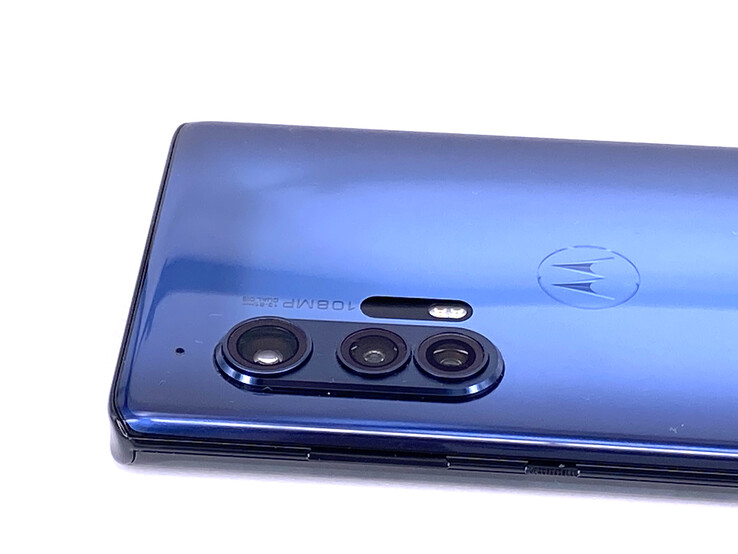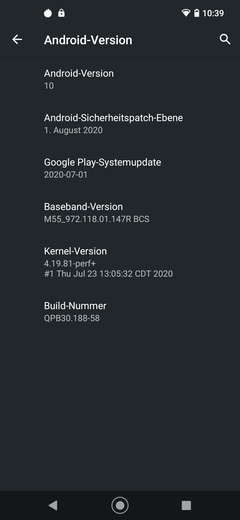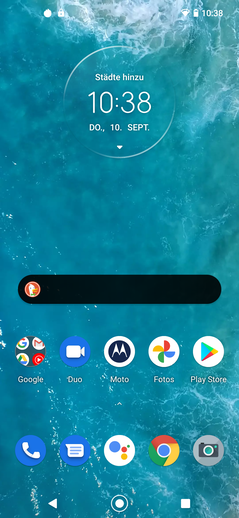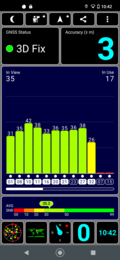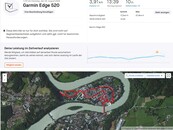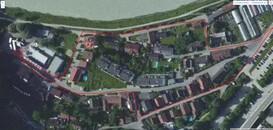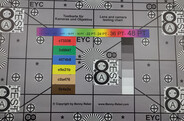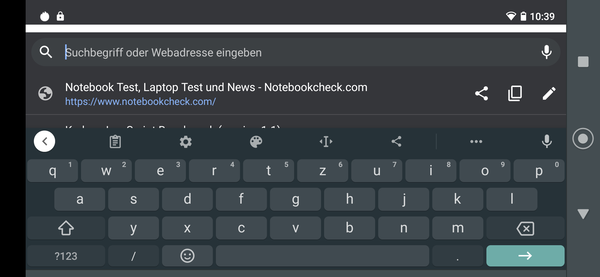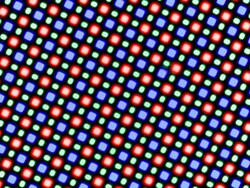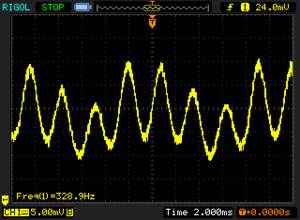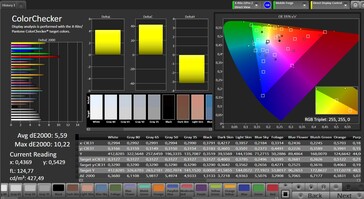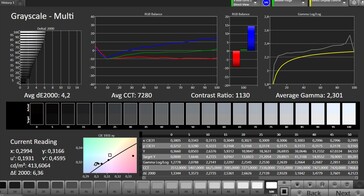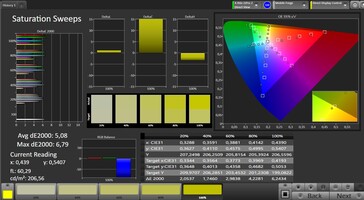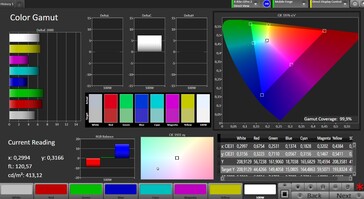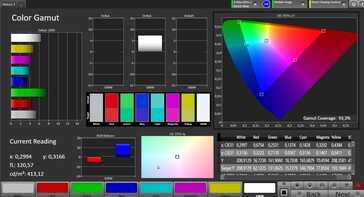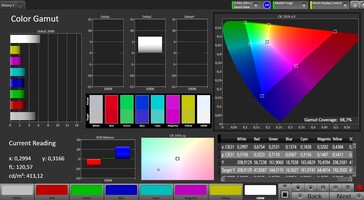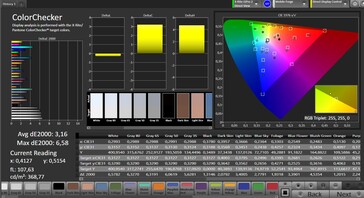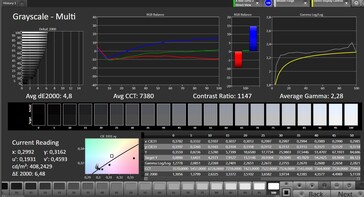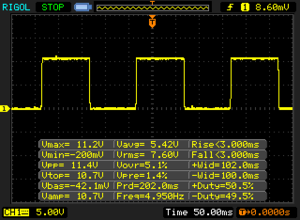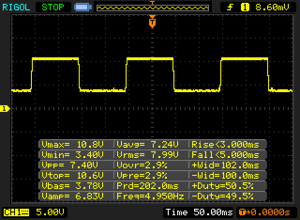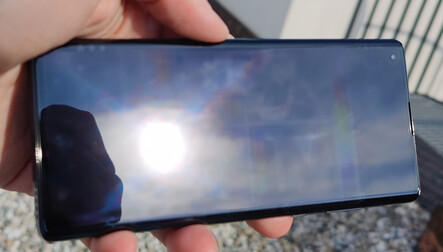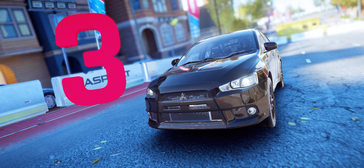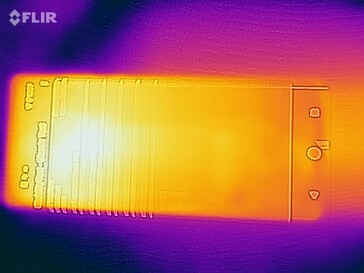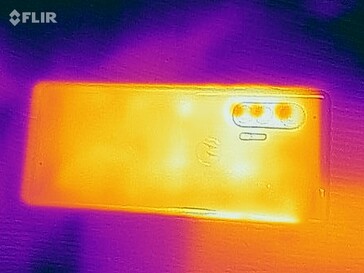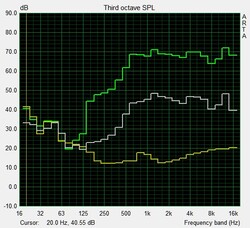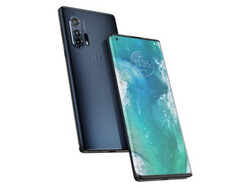Motorola Edge Plus Smartphone Review – High-End Again at Last
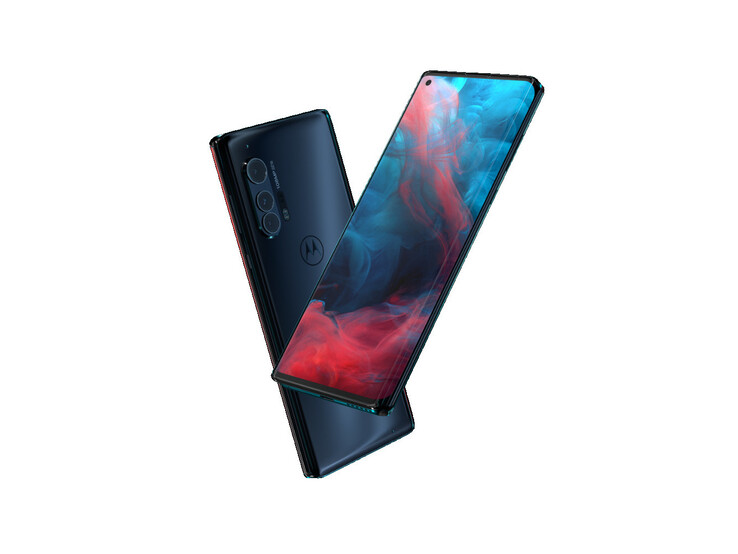
Back in May of 2020 we had the chance to review the Motorola Edge, a high-quality device somewhere in-between upper mid-range and high-end. The Motorola Edge Plus, or Edge+, is unambiguous about its ambitions, and regarded by Motorola as a true high-end flagship smartphone. At an asking price of more than $1,000 it has to compete against the best of the best the smartphone market has to offer.
Its weapons of choice are a camera with more than 100 MP, support for 5G, and a 90 Hz display with edge-to-edge display glass curving around its, well, edges – the hallmark of the Edge series. Let’s find out how well this new player performed in our review, shall we?
Vergleichsgeräte
Rating | Date | Model | Weight | Drive | Size | Resolution | Price |
|---|---|---|---|---|---|---|---|
| 85.8 % v7 (old) | 09 / 2020 | Motorola Edge Plus SD 865, Adreno 650 | 203 g | 256 GB UFS 3.0 Flash | 6.70" | 2340x1080 | |
| 87.7 % v7 (old) | 04 / 2020 | Samsung Galaxy S20+ Exynos 990, Mali-G77 MP11 | 188 g | 128 GB UFS 3.0 Flash | 6.70" | 3200x1440 | |
| 87.1 % v7 (old) | 09 / 2019 | Apple iPhone 11 Pro Max A13 Bionic, A13 Bionic GPU | 226 g | 64 GB SSD | 6.50" | 2688x1242 | |
| 89.4 % v7 (old) | 04 / 2020 | Huawei P40 Pro Kirin 990 5G, Mali-G76 MP16 | 209 g | 256 GB UFS 3.0 Flash | 6.58" | 2640x1200 | |
| 88.2 % v7 (old) | 04 / 2020 | Xiaomi Mi 10 Pro SD 865, Adreno 650 | 208 g | 256 GB UFS 3.0 Flash | 6.67" | 2340x1080 | |
| 88.5 % v7 (old) | 04 / 2020 | OnePlus 8 Pro SD 865, Adreno 650 | 199 g | 256 GB UFS 3.0 Flash | 6.78" | 3168x1440 |
Case – Stylish, but not Waterproof
The Edge Plus looks very similar to its more affordable yet lesser equipped Motorola Edge sibling. It features the same edgeless curved display glass at the front and Gorilla Glass 5 at the rear wrapped tightly around an aluminum frame. The blue-gray rear cover is designed in a way that its surface scatters and reflects light creating very interesting reflection patterns.
At 203 g the Edge Plus is one of the heavier devices available, and it is most likely going to be too large for small hands thanks to its 6.7-inch display. When compressing the rear, the cover budged noticeably, and we could hear the air escape from the inside. For a device at this price point we would have expected more. Nevertheless, the device felt very good in hand and was very well made.
The case is IP52-certified, which is a lower ingress rating than most other smartphone manufacturers have to offer. It is not usable under water.
Connectivity – Plenty of fast Storage
With its 12 GB of RAM and 256 GB of storage the Motorola Edge+ is definitely a high-end device, at least regarding sheer space. Its price has already dropped noticeably – initially, Motorola asked for much more than its current street price of around or slightly less than $1,000.
A card reader for optional storage expansion is not available. In return, it features a 90 Hz display, support for wireless charging, and modern wireless communication protocols such as 5G, Wi-Fi 6, NFC, and Bluetooth 5.1. We were unable to find any weak points regarding the Edge+’s overall connectivity except for maybe an IR blaster that some users might have found useful. Instead, the Edge+ continues to support the oldie-but-goodie 3.5-mm headphone jack for use with analog audio peripherals.
Software – No Bloatware from Motorola
Traditionally, Motorola smartphones are preloaded with a pure Vanilla version of Android, and the Edge+ is no exception. It comes with Android 10 and security patches as of last month, which can be considered fairly up to date.
If you detest bloatware, aka useless preloaded apps taking up precious disk space, you will find the Edge+ to be very pleasing. We found no bloatware whatsoever, just some of Motorola’s own apps for device-specific settings or help, but no trial versions, adware, or other potentially annoying applications at all.
Communication and GPS – Fast Wi-Fi
When connected to our Netgear Nighthawk AX12 reference router, the Edge+ performed as fast as expected of a high-end device. Interestingly enough it turned out to be faster and more consistent transmitting data than receiving it. Signal strength is mediocre and was reduced to 25 % at a distance of 10 m (33 ft) with three walls in-between the smartphone and the Wi-Fi router. Other high-end smartphones offer much higher and more stable Wi-Fi reception.
Maximum speed when downloading data over 4G LTE is LTE Cat 22, and thus up to 2.45 Gbps. 5G is also supported, which adds an extra layer of long-term sustainability and future proofing. LTE signal strength was decent; however, we should note that other high-end smartphones often showed an extra bar or two on the signal strength indicator.
Obtaining location lock outdoors takes fairly long. Once obtained, GPS accuracy was very good at just 3 m. Supported location services include GPS and GLONASS, with no other satellite networks showing in our test. SBAS is not supported either.
In both Google Maps and during our real-world test on our bicycle tour around the block the Motorola Edge+ did a very good job. Safe for one or two locations, where it recorded our track straight through a building, the overall accuracy of the recorded track was very high. We can thus safely say that the Motorola Edge+ is well-suited for navigational purposes with high accuracy expectations.
Telephony and Call Quality – Noticeable Ambient Noise
Following Motorola’s mantra of offering a pure Vanilla flavor of Android the telephony app remained unchanged from Google’s default app. Which is nothing to worry about, because the default app offers everything you might need in a neatly organized and clearly arranged design. As expected of a high-end device both VoLTE and VoWiFi are supported.
Unfortunately, when it comes to call quality the Edge+ performed even worse than the already questionable and mediocre Motorola Edge. Our conversational partners sounded very distant, and we could not help but notice substantial amounts of ambient noise. In addition, the Edge+’s microphone was not particularly sensitive to noise and only recorded when we raised our voice substantially. Otherwise, we were inaudible to our conversational partners on the other end of the line. The same basically applies to talking on speakerphone, with our conversational partners sounding somewhat clearer and better but our own voice continuing to require a certain level of volume and clarity in order to be recognized, recorded, and transmitted.
Cameras – Details out of focus
The main rear-facing camera array features a total of three lenses with the main camera offering a whopping 108 MP resolution. Since images this large are rarely ever required the camera uses 4x pixel binning to combine four pixels into one increasing light sensitivity significantly and resulting in images with a resolution of still fairly high 27 MP.
The main camera did very well in determining a decent white balance compromise. In comparison, photos taken with the OnePlus 8 Pro were noticeably cooler and those taken with the iPhone 11 Pro Max noticeably warmer. However, we found details and overall focus lacking, and other high-end smartphone cameras offered brighter and better exposed photos rich in detail in low-light conditions.
Zooming is supported in 0.1x steps, although ideal lighting conditions are required to make use of all three lenses. Otherwise, the camera software falls back on the main high-resolution camera’s digital zoom. In manual mode you get to actively select your lens of choice.
The ultra-wide-angle lens offers a 16 MP resolution, and its photos were somewhat dark when compared to other high-end smartphone cameras but offered an overall comparable level of detail. The 8 MP telephoto lens performed very well, particularly in extreme close-up macro situations.
Videos are recoded in 6K at 30 FPS or 1080p at 60 FPS. Both, the ultra-wide-angle and the telephoto lens only support up to 1080p at 30 FPS. The camera’s autofocus worked fast and reliable, as did the optical image stabilizer. Adjustments to sudden changes in light were performed fast and very subtle.
At the front, we find a 25 MP camera that could have offered higher details and more focus. In return, exposure was decent, and objects remained recognizable even in low light situations.
Image comparison
Choose a scene and navigate within the first image. One click changes the position on touchscreens. One click on the zoomed-in image opens the original in a new window. The first image shows the scaled photograph of the test device.
Hauptobjektiv BlumeHauptobjektiv UmgebungHauptobjektiv Low LightUltraweitwinkelEven under ideal lighting conditions we did not grow fond of the main camera’s representation of details. Contrast ratio was acceptable but varied significantly throughout the photo. Colors were too pale overall.
Details deteriorated even further in low light, and illumination was mediocre.
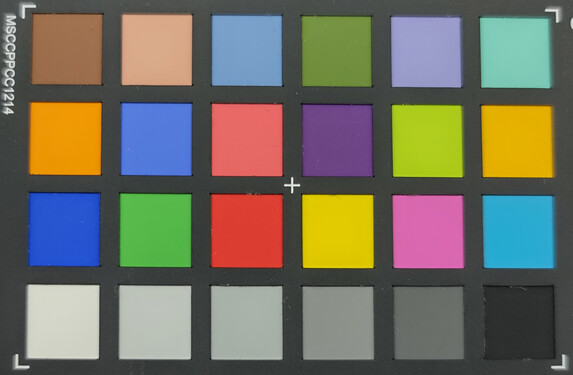
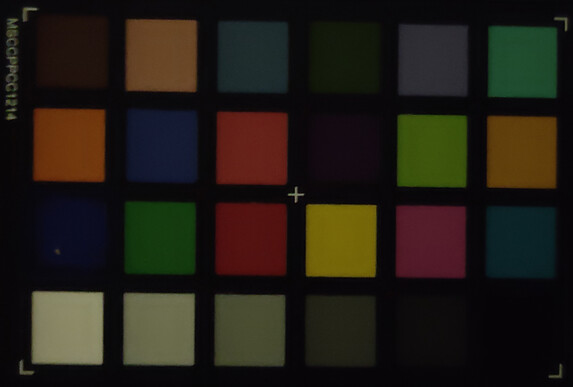
Accessories and Warranty – Affordable Optional Power Supply
Inside the box we find a fast charger, a SIM tool, and a USB cable. The power supply is comparatively affordable and can be purchased retroactively for around $20, including cable.
Scope and length of warranty depends on country of purchase; our review unit came with a 24 months limited warranty.
Input Devices and Handling – Versatile Gesture Control
The Motorola Edge+’s touchscreen was very accurate all the way to its edges, and the 90 Hz display improved subjective smoothness and responsiveness quite significantly. The system reacted very quickly to our inputs, and scrolling was buttery smooth.
A fingerprint reader is hidden behind the display. It is located fairly far down, which takes quite some getting used to. It worked very fast and reliably.
As expected of Motorola there are several gestures and other ways of intelligent input to control the device. For example, you can flip the smartphone over in order to mute it or press and hold the volume rocker to skip forward or backwards through songs.
If desired, you can even enable a small menu offering various quick actions that can be accessed by touching the right display edge.
Display – Low Brightness for the Edge Plus
Its widened 19.5:9 FHD resolution is at the lower end of what is still acceptable for high-end smartphones. Given a smartphone display’s small size details remained crisp and fine, nevertheless. The AMOLED display supports HDR and feels very smooth thanks to its 90 Hz refresh rate.
We already noted a fairly dim maximum brightness when reviewing the Motorola Edge, and while the Edge+ offers more it also does play in a very different and more challenging league. Consequently, its average of 582 nits was barely good enough for second to last place.
| |||||||||||||||||||||||||
Brightness Distribution: 90 %
Center on Battery: 549 cd/m²
Contrast: ∞:1 (Black: 0 cd/m²)
ΔE ColorChecker Calman: 3.16 | ∀{0.5-29.43 Ø4.78}
ΔE Greyscale Calman: 4.2 | ∀{0.09-98 Ø5}
99.9% sRGB (Calman 2D)
Gamma: 2.301
CCT: 7280 K
| Motorola Edge Plus AMOLED, 2340x1080, 6.7" | Samsung Galaxy S20+ AMOLED, 3200x1440, 6.7" | Apple iPhone 11 Pro Max OLED, 2688x1242, 6.5" | Huawei P40 Pro OLED, 2640x1200, 6.6" | Xiaomi Mi 10 Pro Super AMOLED, 2340x1080, 6.7" | OnePlus 8 Pro AMOLED, 3168x1440, 6.8" | |
|---|---|---|---|---|---|---|
| Screen | 30% | 41% | 33% | 48% | 52% | |
| Brightness middle (cd/m²) | 549 | 740 35% | 790 44% | 584 6% | 753 37% | 796 45% |
| Brightness (cd/m²) | 582 | 747 28% | 790 36% | 576 -1% | 762 31% | 779 34% |
| Brightness Distribution (%) | 90 | 94 4% | 97 8% | 95 6% | 96 7% | 94 4% |
| Black Level * (cd/m²) | ||||||
| Colorchecker dE 2000 * | 3.16 | 2.6 18% | 1.4 56% | 1.1 65% | 0.9 72% | 0.68 78% |
| Colorchecker dE 2000 max. * | 6.58 | 4.57 31% | 3.4 48% | 2.3 65% | 1.6 76% | 1.55 76% |
| Greyscale dE 2000 * | 4.2 | 1.5 64% | 1.9 55% | 1.8 57% | 1.5 64% | 1.1 74% |
| Gamma | 2.301 96% | 2.269 97% | 2.23 99% | 2.16 102% | 2.24 98% | 2.237 98% |
| CCT | 7280 89% | 6284 103% | 6466 101% | 6355 102% | 6415 101% | 6310 103% |
* ... smaller is better
Screen Flickering / PWM (Pulse-Width Modulation)
| Screen flickering / PWM detected | 328.9 Hz | ||
The display backlight flickers at 328.9 Hz (worst case, e.g., utilizing PWM) . The frequency of 328.9 Hz is relatively high, so most users sensitive to PWM should not notice any flickering. However, there are reports that some users are still sensitive to PWM at 500 Hz and above, so be aware. In comparison: 53 % of all tested devices do not use PWM to dim the display. If PWM was detected, an average of 8111 (minimum: 5 - maximum: 343500) Hz was measured. | |||
Thanks to AMOLED technology the display offers true blacks, and thus an infinite contrast ratio on paper. In our reviews with a spectrophotometer and the CalMAN software we noticed a very minor blue tint and very accurate overall colors. And while all other high-end smartphones we compared the Edge+ to offered an even better color accuracy the difference was invisible to the naked eye.
Like all OLED panels the display uses PWM for brightness regulation, in this particular case at a frequency of 328.9 Hz. While fairly high we would still suggest trying it out before committing to it if you are known to be sensitive to display flicker.
Display Response Times
| ↔ Response Time Black to White | ||
|---|---|---|
| 6 ms ... rise ↗ and fall ↘ combined | ↗ 3 ms rise | |
| ↘ 3 ms fall | ||
| The screen shows very fast response rates in our tests and should be very well suited for fast-paced gaming. In comparison, all tested devices range from 0.1 (minimum) to 240 (maximum) ms. » 17 % of all devices are better. This means that the measured response time is better than the average of all tested devices (20.2 ms). | ||
| ↔ Response Time 50% Grey to 80% Grey | ||
| 8 ms ... rise ↗ and fall ↘ combined | ↗ 3 ms rise | |
| ↘ 5 ms fall | ||
| The screen shows fast response rates in our tests and should be suited for gaming. In comparison, all tested devices range from 0.165 (minimum) to 636 (maximum) ms. » 19 % of all devices are better. This means that the measured response time is better than the average of all tested devices (31.6 ms). | ||
Response times are short, a quality gamers will rejoice at.
Outdoor usability is limited due to its low maximum brightness, and the display is rendered unreadable in direct sunlight. Viewing angles are very good, and the image remains undistorted even at extremely acute angles.
Performance – Plenty of Power
At the time of writing, the Motorola Edge+ featured the second-fastest Qualcomm SoC available. The Snapdragon 865 offers 8 processor cores in three clusters running at up to 2.84 GHz, and it allowed the smartphone to not only score very high in our performance benchmarks but to also offer a very good overall system performance.
Looking at graphics performance we find the Motorola Edge+ to be at the top as well, which makes the device one of the fastest smartphones available at the time of writing.
Everyday snappiness benefited immensely not just from the smartphone’s high level of performance but also its 90 Hz display, which increased subjective performance and smoothness even further.
| PCMark for Android | |
| Work performance score (sort by value) | |
| Motorola Edge Plus | |
| Samsung Galaxy S20+ | |
| Huawei P40 Pro | |
| Xiaomi Mi 10 Pro | |
| OnePlus 8 Pro | |
| Average Qualcomm Snapdragon 865 (10990 - 19989, n=22) | |
| Work 2.0 performance score (sort by value) | |
| Motorola Edge Plus | |
| Samsung Galaxy S20+ | |
| Huawei P40 Pro | |
| Xiaomi Mi 10 Pro | |
| OnePlus 8 Pro | |
| Average Qualcomm Snapdragon 865 (9202 - 15299, n=23) | |
| AnTuTu v8 - Total Score (sort by value) | |
| Motorola Edge Plus | |
| Samsung Galaxy S20+ | |
| Apple iPhone 11 Pro Max | |
| Huawei P40 Pro | |
| Xiaomi Mi 10 Pro | |
| OnePlus 8 Pro | |
| Average Qualcomm Snapdragon 865 (527301 - 631025, n=24) | |
When browsing the web, the device secured a top spot as well. Scrolling and loading images was buttery smooth, and complex web pages loaded quickly and without noticeable delay.
| Jetstream 2 - 2.0 Total Score | |
| Average of class Smartphone (23.8 - 387, n=154, last 2 years) | |
| Apple iPhone 11 Pro Max (Safari Mobile 13.1) | |
| Motorola Edge Plus (Chrome 84) | |
| Huawei P40 Pro (Huawei Browser 10.1) | |
| Xiaomi Mi 10 Pro (Chrome 81) | |
| Average Qualcomm Snapdragon 865 (45.2 - 77, n=20) | |
| OnePlus 8 Pro (Chrome 80) | |
| Samsung Galaxy S20+ (Chrome 80) | |
| JetStream 1.1 - Total Score | |
| Apple iPhone 11 Pro Max (Safari Mobile 13.1) | |
| Huawei P40 Pro (Huawei Browser 10.1) | |
| Motorola Edge Plus (Chrome 84) | |
| Xiaomi Mi 10 Pro (Chrome 81) | |
| OnePlus 8 Pro (Chrome 80) | |
| Average Qualcomm Snapdragon 865 (74.2 - 145.1, n=21) | |
| Samsung Galaxy S20+ (Chrome 80) | |
| Speedometer 2.0 - Result 2.0 | |
| Average of class Smartphone (15.2 - 643, n=128, last 2 years) | |
| Apple iPhone 11 Pro Max (Safari Mobile 13.1) | |
| Huawei P40 Pro (Huawei Browser 10.1) | |
| Motorola Edge Plus (Chome 84) | |
| Xiaomi Mi 10 Pro (Chrome 81) | |
| OnePlus 8 Pro (Chome 80) | |
| Average Qualcomm Snapdragon 865 (30.6 - 74.5, n=19) | |
| Samsung Galaxy S20+ (Chome 80) | |
| WebXPRT 3 - Overall | |
| Apple iPhone 11 Pro Max (Safari Mobile 13.1) | |
| Average of class Smartphone (38 - 380, n=35, last 2 years) | |
| Motorola Edge Plus (Chrome 84) | |
| Average Qualcomm Snapdragon 865 (97 - 127, n=23) | |
| OnePlus 8 Pro (Chrome 80) | |
| Xiaomi Mi 10 Pro (Chrome 81) | |
| Samsung Galaxy S20+ (Chrome 80) | |
| Huawei P40 Pro | |
| Octane V2 - Total Score | |
| Apple iPhone 11 Pro Max (Safari Mobile 13.1) | |
| Average of class Smartphone (2228 - 121337, n=201, last 2 years) | |
| Motorola Edge Plus (Chrome 84) | |
| Huawei P40 Pro (Huawei Browser 10.1) | |
| OnePlus 8 Pro (Chrome 80) | |
| Xiaomi Mi 10 Pro (Chrome 81) | |
| Average Qualcomm Snapdragon 865 (14606 - 31224, n=23) | |
| Samsung Galaxy S20+ (Chrome 80) | |
| Mozilla Kraken 1.1 - Total | |
| Samsung Galaxy S20+ (Chrome 80) | |
| Average Qualcomm Snapdragon 865 (1623 - 2911, n=24) | |
| Xiaomi Mi 10 Pro (Chrome 81) | |
| Motorola Edge Plus (Chrome 84) | |
| OnePlus 8 Pro (Chrome 80) | |
| Huawei P40 Pro (Huawei Browser 10.1) | |
| Average of class Smartphone (257 - 28190, n=156, last 2 years) | |
| Apple iPhone 11 Pro Max (Safari Mobile 13.1) | |
* ... smaller is better
The Edge+’s fast UFS 3.0 storage performed at a level comparable to its competitors and offered fast access and short application load times.
| Motorola Edge Plus | Samsung Galaxy S20+ | Huawei P40 Pro | Xiaomi Mi 10 Pro | OnePlus 8 Pro | Average 256 GB UFS 3.0 Flash | Average of class Smartphone | |
|---|---|---|---|---|---|---|---|
| AndroBench 3-5 | -8% | -8% | 7% | -8% | -16% | 61% | |
| Sequential Read 256KB (MB/s) | 1721 | 1603 -7% | 1775 3% | 1739 1% | 1627 -5% | 1547 ? -10% | 2223 ? 29% |
| Sequential Write 256KB (MB/s) | 746 | 694 -7% | 395.7 -47% | 750 1% | 730 -2% | 575 ? -23% | 1838 ? 146% |
| Random Read 4KB (MB/s) | 230.9 | 199.6 -14% | 228.1 -1% | 264.9 15% | 208.3 -10% | 210 ? -9% | 295 ? 28% |
| Random Write 4KB (MB/s) | 235.7 | 229.8 -3% | 271.8 15% | 258.5 10% | 197.7 -16% | 188.5 ? -20% | 335 ? 42% |
Gaming – 60 FPS, Anyone?
High-end smartphones are more than just workhorses; they have to be gaming-capable as well, and the Motorola Edge+ delivers exceptionally well in this regard. In both, Asphalt 9 as well as PUBG Mobile, it managed to achieve framerates north of 60 FPS in high details with PUBG dropping to a still smooth 40 FPS in the highest possible details. Framerates were determined using GameBench.
Game controls via touchscreen and gyroscope worked well. That said whether or not you like the fact that on-screen buttons are at the bottom behind the curved part of the glass is a matter of taste.
Emissions – Slower under Load
Temperature
Under sustained load temperatures rose to 44.9 °C, which is far from critical but can get uncomfortable on hot days. Sustained low-load use resulted in barely noticeable temperature increases.
According to GFXBench’s battery test the Motorola Edge+ had trouble maintaining its high level of performance under sustained load, and performance dropped by more than 20 % fairly quickly.
(±) The maximum temperature on the upper side is 44.9 °C / 113 F, compared to the average of 35.2 °C / 95 F, ranging from 21.9 to 247 °C for the class Smartphone.
(±) The bottom heats up to a maximum of 43.5 °C / 110 F, compared to the average of 34 °C / 93 F
(±) In idle usage, the average temperature for the upper side is 32.2 °C / 90 F, compared to the device average of 32.9 °C / 91 F.
Speakers
There is a total of two speakers on the device. One at the bottom edge, the other doubles as earphone. This setup is basically identical to the more affordable Motorola Edge. However, the more expensive Edge+ offers a more linear representation of mids and highs and more pronounced deep mids making for a warmer soundscape. Voices remained distant, and the speakers were overwhelmed with epic movie scenes. Pop music sounded okay, classical music lacked differentiation between the various individual instruments.
All things considered the speakers are okay but certainly not the best in the realm of high-end smartphones. Using either Bluetooth or the 3.5-mm headphone jack will result in much clearer and better audio.
Motorola Edge Plus audio analysis
(±) | speaker loudness is average but good (80.4 dB)
Bass 100 - 315 Hz
(-) | nearly no bass - on average 26.5% lower than median
(±) | linearity of bass is average (9.7% delta to prev. frequency)
Mids 400 - 2000 Hz
(+) | balanced mids - only 3.5% away from median
(+) | mids are linear (5.9% delta to prev. frequency)
Highs 2 - 16 kHz
(+) | balanced highs - only 1.6% away from median
(+) | highs are linear (3.5% delta to prev. frequency)
Overall 100 - 16.000 Hz
(±) | linearity of overall sound is average (19.4% difference to median)
Compared to same class
» 27% of all tested devices in this class were better, 8% similar, 65% worse
» The best had a delta of 11%, average was 35%, worst was 134%
Compared to all devices tested
» 47% of all tested devices were better, 7% similar, 46% worse
» The best had a delta of 4%, average was 24%, worst was 134%
Samsung Galaxy S20+ audio analysis
(+) | speakers can play relatively loud (85.6 dB)
Bass 100 - 315 Hz
(-) | nearly no bass - on average 73.2% lower than median
(+) | bass is linear (0% delta to prev. frequency)
Mids 400 - 2000 Hz
(-) | nearly no mids - on average 73.2% lower than median
(+) | mids are linear (0% delta to prev. frequency)
Highs 2 - 16 kHz
(-) | nearly no highs - on average 73.2% lower than median
(+) | highs are linear (0% delta to prev. frequency)
Overall 100 - 16.000 Hz
(-) | overall sound is not linear (115.8% difference to median)
Compared to same class
» 87% of all tested devices in this class were better, 4% similar, 9% worse
» The best had a delta of 11%, average was 35%, worst was 134%
Compared to all devices tested
» 96% of all tested devices were better, 1% similar, 3% worse
» The best had a delta of 4%, average was 24%, worst was 134%
Battery life – Long-term Use
Power Consumption
While there are significantly more energy-efficient smartphones than the Motorola Edge+ the opposite is also true, and the device thus ended up somewhere in the middle. Only under load did it consume more energy than other high-end smartphones.
| Off / Standby | |
| Idle | |
| Load |
|
Key:
min: | |
| Motorola Edge Plus 5000 mAh | Samsung Galaxy S20+ 4500 mAh | Apple iPhone 11 Pro Max 3969 mAh | Huawei P40 Pro 4200 mAh | Xiaomi Mi 10 Pro 4500 mAh | OnePlus 8 Pro 4510 mAh | Average Qualcomm Snapdragon 865 | Average of class Smartphone | |
|---|---|---|---|---|---|---|---|---|
| Power Consumption | 3% | 3% | 33% | 36% | -41% | -1% | 11% | |
| Idle Minimum * (Watt) | 1.2 | 1 17% | 0.92 23% | 0.92 23% | 0.61 49% | 2.2 -83% | 1.133 ? 6% | 0.848 ? 29% |
| Idle Average * (Watt) | 1.8 | 1.7 6% | 2.9 -61% | 1.41 22% | 1.19 34% | 3.3 -83% | 2.23 ? -24% | 1.434 ? 20% |
| Idle Maximum * (Watt) | 2.3 | 2.3 -0% | 2.94 -28% | 1.47 36% | 1.23 47% | 3.7 -61% | 2.45 ? -7% | 1.618 ? 30% |
| Load Average * (Watt) | 5.8 | 5.8 -0% | 3.65 37% | 3.35 42% | 4.18 28% | 5.9 -2% | 5.26 ? 9% | 7.01 ? -21% |
| Load Maximum * (Watt) | 10.9 | 11.8 -8% | 6.18 43% | 6.37 42% | 8.53 22% | 8.3 24% | 9.68 ? 11% | 11.3 ? -4% |
* ... smaller is better
Battery Life
Thanks to its 5,000 mAh battery the Edge+ was able to secure first place when it comes to raw battery capacity, and it lasted for 15:45 hours in our Wi-Fi test – first place among its competitors. It should easily last a full two workdays of browsing the web without needing to be recharged. Even if Apple’s iPhone 11 Pro Max managed to outrun the Edge+ in some scenarios overall battery life was still excellent.
There is, however, one downside. The included 18 W fast charger takes more than two hours to fully charge the device. Compare that to the significantly faster 30 W charger that the OnePlus 8 Pro comes with. Not only does it take shorter to fully charge the battery, it will also take much less time to achieve at least a few extra hours of battery life.
Wireless charging with up to 15 W is also supported, and honestly also expected of expensive smartphones.
| Motorola Edge Plus 5000 mAh | Samsung Galaxy S20+ 4500 mAh | Apple iPhone 11 Pro Max 3969 mAh | Huawei P40 Pro 4200 mAh | Xiaomi Mi 10 Pro 4500 mAh | OnePlus 8 Pro 4510 mAh | |
|---|---|---|---|---|---|---|
| Battery runtime | -18% | 16% | -24% | -17% | -6% | |
| Reader / Idle (h) | 36.9 | 34 -8% | 43.6 18% | 24.6 -33% | 35.6 -4% | 35.1 -5% |
| H.264 (h) | 20.7 | 16.3 -21% | 22.4 8% | 19 -8% | 16.2 -22% | 17.1 -17% |
| WiFi v1.3 (h) | 15.8 | 13.2 -16% | 15.2 -4% | 12.4 -22% | 14.4 -9% | 15.4 -3% |
| Load (h) | 4.8 | 3.6 -25% | 6.8 42% | 3.3 -31% | 3.3 -31% | 4.9 2% |
Pros
Cons
Verdict – How well did it do?
If you charge more than $1,000 for a smartphone you have to deliver. Unfortunately, the Motorola Edge+ fails to do just that in too many areas. The camera offers a high resolution, but details lack focus and the main lens performed mediocre at best in low light. The case is stylish and modern but can be depressed and is not waterproof.
Charging is another area where its competitors offer more bang for the buck, call quality should have been better, and the speakers are not among the best of what high-end smartphones had to offer at the time of writing. The display is not as bright and color-accurate as it is on other smartphones in the Edge+’s price range, and the device tends to thermal throttle under sustained load.
Granted, its edgeless display and stylish backside make the Motorola Edge+ stand out to a certain degree, location services work great once location lock has been obtained, and Motorola pulled out all the stops regarding wireless communication, from 5G to Wi-Fi 6 to Bluetooth 5.1.
The Edge+ signifies Motorola’s return to the realm of high-end smartphones. Unfortunately, the device fails to justify its high asking price.
If you are looking for a smartphone with 3.5-mm headphone jack you will be happy to hear that Motorola continues to support the analog audio output. Another benefit is its pure and clean rendition of Android including somewhat up-to-date security patches.
The Motorola Edge+ may not be the high-end smartphone with the best price-performance ratio, particularly considering more affordable alternatives such as the OnePlus 8 Pro or the Xiaomi Mi 10 Pro. However, it manages to offer a very high level of performance, a unique design, and very good battery life.
Motorola Edge Plus
- 08/31/2022 v7 (old)
Florian Schmitt




